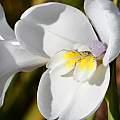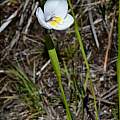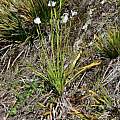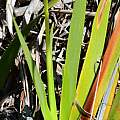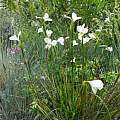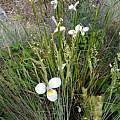Diplarrena (known once as Diplarrhena) is a genus in the Iridaceae family endemic to Australia. It has two species that are showy and excellent for cultivation. Both grow from a rhizome into clumps of fans of stiff iris like leaves up to 30 cm tall but not noticeable amongst the long grass and bushland in which they grow until they flower. The flowers come on a fine but strong stem 30 to 45 cm above the leaves and stand out like small white flags. The individual flowers are up to 5-6 cm across and last 5 days or more with a succession of flowers making a display of 6 to 8 weeks in spring to early summer.
To sow from seeds, treat with KNO3 (potassium nitrate) and then sow. This treatment worked well for John Conran.
Diplarrena latifolia Benth. (syn. Diplarrena moraea var. latifolia (Benth.) Baker) is endemic to Tasmania and has a more sub-alpine habitat than the other species. Flowers are white with purple and yellow markings. It can be grown in partial or full sun in moist well-drained soils. Height range: 1-3 ft. The first photo by Rob Hamilton was taken at the Royal Tasmanian Botanical Gardens in Hobart. The rest of the photos from iNaturalist were taken by Joey Santore in the highlands of Tasmania in December and are shared under a CC BY-NC license.
Diplarrena moraea Labill. from Victoria, Tasmania, and New South Wales, has white, white and yellow, or sometimes white with yellow and some purple, honey-scented flowers. It grows en masse at times but is often seen as single plants on the roadside in rural areas. Height range: to about 1 m. The first two photos were taken by Beth in 2002 in her Seattle, Washington garden. The next three photos were taken by Rob Hamilton of the flower, the plant, and a mass on a grassy bank above his home in Southern Tasmania.

